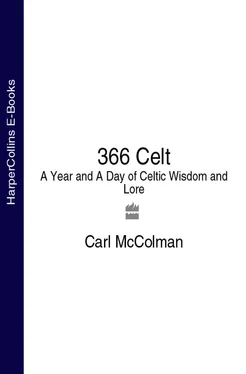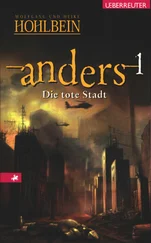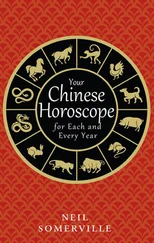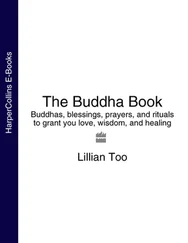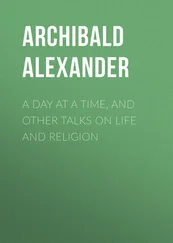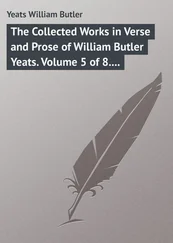So at the end of the day, we really know very little about the ancient druids, their beliefs, and their rituals. Later folklore and mythology of the Celtic world offers some ideas as to what these ancient philosopher-priests (and -priestesses) would have been like, but these sources date from a time when druidism had already been extinct for centuries. Meanwhile, a colorful assortment of “revivals” of druidism over the last 250 years tell us more about modern spirituality (and romanticism) than about the ancient wisdom they are supposedly reconstructing.
The Roman historian Pliny provides us with one of the most memorable of images associated with the druids—the collecting of mistletoe. On the sixth day after the new moon, the druid would climb into an oak tree and cut the mistletoe with a golden sickle, dropping it onto a white cloak held by others on the ground—it was unlucky for the mistletoe to touch the ground. It would then be prepared and used as a healing herb. Meanwhile, the ceremony would culminate with the sacrifice of two white bulls. This unusual ritual has become one of the most popular images of ancient druidry, and I know of at least one organization of modern druids that duly performs a “Mistletoe Rite” every month on the sixth night of the moon. But no one other than Pliny discusses the ceremony, leading some to question whether it had any grounding in reality. Perhaps it was a one-time event that Pliny witnessed, or for that matter, perhaps he (or his source) fabricated the entire affair. The take-away: we never know how others will view us. We never know how accurate our perception of others really is. These are points worth keeping in mind.
The ancient druids were said to believe in reincarnation. They were soothsayers and diviners, and were as necessary for the performing of ancient Celtic sacrifices as a Catholic priest is to the consecration of the Eucharistic host. They were knowledgable about the planets, and the natural world, and moral philosophy, and yet they taught by the use of riddles and enigmas. If all of this is beginning to sound like a hodgepodge, well, it is. So little information is available to truly shed light on the earliest Celtic priests. In her book Druid Shaman Priest , scholar Leslie Ellen Jones suggests that succeeding generations have reinvented the ways we think about the druids, in ways that make this mysterious order of magical intellectuals relevant to our modern world.
There’s a lesson in there. It’s not only the druids that we constantly reinvent. We reinvent God (such as the notion of the Divine Feminine—the Goddess). We reinvent our understanding of what it means to be Celtic, or to be spiritual, or to be wise. There’s not necessarily anything wrong with this—but it seems like it would be a good idea to remember that such processes of revising how we understand our world and ourselves are perpetually going on.
Beginning in the sixteenth and seventeenth centuries, antiquarians and amateur archaeologists began to explore theories about the prehistoric stone circles and other ancient monuments in the British Isles. Their pet theory? That such sites were originally the temples of the druids. Today we can easily dismiss the inaccuracies of such speculation—we know that Celtic culture only arrived in the British Isles around 500 BCE, centuries after sites like Stonehenge and Newgrange were constructed. But within the framework of the world-view of three centuries ago, such ideas were electrifying. Western society was moving out of the middle ages and into the modern world; nations were being formed and the soul of the modern, secular, scientific age was being born. In this epochal age, people sought their roots, and a vision of druids constructing or using the megalithic sites seemed as good an entry as any into the dreams of the past.
Are earlier notions of who the druids were mere folly and fantasy? Yes, perhaps. But if we learn one thing from the errors of the past, let it be this: we have no more of a lock on the “truth” about the druids today than the antiquarians of the seventeenth century had in their time. Perhaps our image of the shamanistic nature-loving priests will someday be just as quaint as the druids-as-stone-age-engineers.
A legendary meeting of druids is said to have taken place at a London tavern in 1717, attended by delegates of druidic and bardic orders from throughout the Celtic world. Scholars today doubt that such a meeting ever really occurred, but it lives on as a myth in the traditions of several modern druid groups—and what a singularly appropriate myth, seeing the rebirth of druidry not in a stone circle or sacred grove, but at a pub! Some sixty-four years later, a secret society called the Ancient Order of Druids was founded, and this marks the reliable history of druidism reborn (and yes, this order’s organizational meeting took place in a pub). For almost two hundred years, druidism was a blend of fraternal organization and national identity (especially in Wales, where bardic competitions became popular beginning in the nineteenth century). Many of the stereotypes that dog druidism today arose from the fraternal druid orders, which consisted of English gentlemen, wearing white robes and performing ceremonies in London parks as well as more traditionally sacred sites like Glastonbury or Stonehenge. For these druids, the Celtic wisdom-keepers of old were revered not so much for their religious beliefs or intellectual function as for their symbolic value as the cultural forefathers of the land.
Just as the eighteenth century druid revival began in a pub, another humorous chapter in the history of the druids dates to 1960s North America. At Carleton College in Minnesota, students were required to attend chapel regularly—unless they were participants in the regular religious ceremonies of a non-Christian religion. So in 1963 a group of clever students organized a “druid grove,” mainly so that they could skip chapel and hang out in the woods. The college, perhaps sensitive to the satirical nature of this assembly, dropped the chapel requirements shortly thereafter—but the druids found that their organization thrived, no longer as a form of ironic protest but as a genuine (if somewhat anarchic) spiritual movement. This organization, known as the Reformed Druids of North America, eventually inspired other, more earnest druid groups, such as the Henge of Keltria or Ár nDraíocht Féin. Meanwhile, across the ocean, British druids were undergoing a similar process of transformation from the secular fraternal groups of old, to younger, hipper, more pagan-identified communities that characterize the new face of druidry for tomorrow.
And so the druids continue their process of reinvention. What will the future hold?
Neopagan (“new pagan”) druidry is a creative spiritual force, combining knowledge of myth and folklore with a body of ritual designed to honor the earth and celebrate community. Leaders of neopagan druids speculate on the spirituality of polytheism and pantheism for today, and consider the implications of deep, nature mysticism for today’s urbanized society. Of course, not everyone with an interest in Celtic matters will embrace the new druidism, if for no other reason than the ongoing vitality of the Christian faith, especially in Ireland and North America. In some ways, the druids of old really are lost—druidism has not been an independent and socially influential intellectual or philosophical movement for at least 1500 years. But the attempts at reviving druidism, even as a minority cultural or spiritual movement, speak to the ongoing need for Celtic wisdom—even if its influence is marginal rather than mainstream.
Читать дальше
